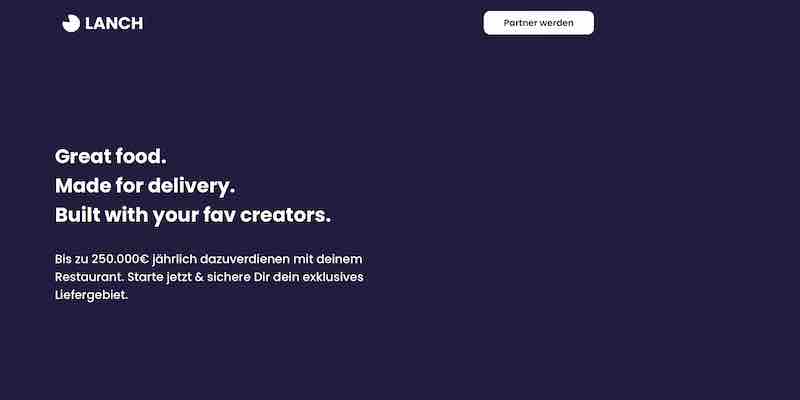Lanch: Merging Influencers with Food Delivery for a Unique Branding Experience

Lanch, a Berlin-based startup, is innovatively merging the worlds of food and influencers by partnering with creators to launch unique food delivery brands. The company recently secured $6.9 million in funding after successfully launching a pizza brand, “Happy Slice,” in collaboration with German YouTubers Knossi and Trymacs, which sold over 30,000 pizzas during its debut weekend. Lanch’s model involves producing these influencer-branded foods in “virtual kitchens” within existing restaurants. Their next venture is “Loco Chicken,” collaborating with German musician Luciano. While attaching non-food influencers to food brands might seem unconventional, Lanch believes its tech-first approach, emphasizing data-driven insights for creators and restaurants, sets it apart from similar U.S. ventures that have faced challenges.
Thought-Provoking Questions and Insights:
- Influencer-Driven Branding: How might integrating influencers into the food delivery market reshape branding strategies and consumer engagement in the industry?
- Virtual Kitchens vs. Traditional Restaurants: With Lanch utilizing spaces within existing restaurants for their virtual kitchens, what implications might this have for the traditional restaurant business model and the emerging ghost kitchen trend?
- Data-Driven Food Delivery: Lanch emphasizes a tech-first, data-driven approach. How might this focus on data analytics influence the quality, popularity, and evolution of influencer-branded food products?
Reference to the original article.
Influencer-Driven Branding:
Integrating influencers into the food delivery market introduces a novel approach to branding. Influencers, with their vast and dedicated follower bases, can provide instant visibility and credibility to a brand. This means that new food brands, when associated with a famous influencer, can gain immediate traction and recognition, bypassing the traditional time-consuming and resource-intensive branding processes. Moreover, influencers’ personal connection with their audience can foster a deeper emotional connection with the brand, leading to higher consumer engagement and loyalty. However, this also poses a challenge: the brand’s reputation becomes closely tied to the influencer, and any negative publicity or controversy surrounding the influencer can impact the brand’s image.
Virtual Kitchens vs. Traditional Restaurants:
Lanch’s model of using spaces within existing restaurants for their virtual kitchens offers a symbiotic relationship. This can be a source of additional revenue for traditional restaurants, especially during off-peak hours, and a way to optimize kitchen resources. It also allows restaurants to diversify their offerings without a complete brand overhaul. On the other hand, the rise of virtual kitchens could challenge the traditional dine-in model as consumers get more accustomed to a wider variety of delivery-only options. The ghost kitchen trend, which focuses on delivery-only spaces without a physical dining area, might see increased competition as traditional restaurants also jump into the delivery-only space, leveraging their existing infrastructure.
Data-Driven Food Delivery:
Lanch’s emphasis on a tech-first, data-driven approach can revolutionize the food delivery industry, especially in the influencer-branded segment. By harnessing data analytics, Lanch can gain insights into consumer preferences, leading to better menu curation tailored to audience tastes. It can also help predict food trends, optimize supply chains, and reduce wastage. The continuous feedback loop, enabled by real-time data analytics, can ensure that food quality remains consistent and meets consumer expectations. Furthermore, influencers can leverage this data to understand their audience better, leading to more personalized marketing campaigns and promotions. This data-centric approach can drive the popularity of influencer-branded food products, ensuring they evolve based on consumer feedback and preferences rather than mere market speculation.